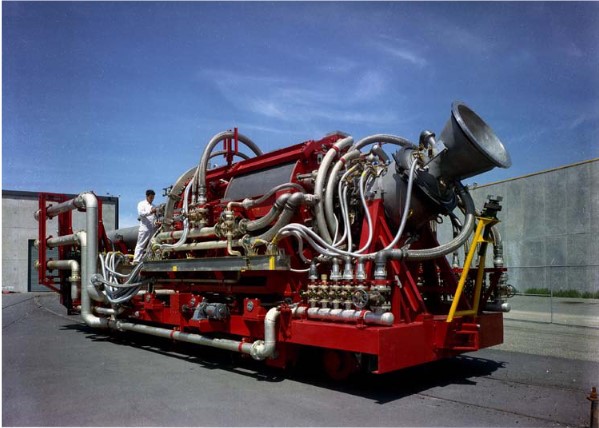The Return of Burevestnik
Decker Eveleth and Jeffrey Lewis have identified a launch site adjacent to a nuclear weapons storage site as possibly being for Russia’s Burevestnik nuclear cruise missile. Jonathan Landay wrote about it and quoted me, among others.
I wrote about the history of flying nuclear rockets, mainly the Rover and Tory reactors, in 2018. Nothing in the science or my opinion has changed since then. The design of these rockets is heavily constrained by the requirements of both a nuclear reactor and the rocket propellant, and those constraints result in a design that will have inherent weaknesses, one of which is the tendency to tear itself apart.
The US researched a nuclear-powered cruise missile, driven by the Tory reactor. It never flew. A followon was the Rover reactor, planned for use in space only, not in the atmosphere. Rover tests were somewhat more promising, and the idea has been resurrected recently, although it seems not to have been followed up.
The Russians did a disastrous test on Burevestnik in 2019 that killed several workers on the project. According to Landay’s article, they’ve done 12 more tests, although I don’t recall seeing much about them. I do recall that at some point, Vladimir Putin declared the project a success and the missile ready to go into production.
I’ve recently read Teller’s War by William Broad. It was published in 1992 and tells the story of Edward Teller’s ability to convince Ronald Reagan of the invincibility of the x-ray laser in space and the contortions this produced at Lawrence Livermore National Laboratory. Having been in the Laser Division at the time, I witnessed Los Alamos reactions to this fiasco as they occurred, but I missed the book, probably because in 1992, I was swept up in the reaction to the disintegration of the Soviet Union.
Teller’s War describes a model for what I suspect has happened with Burevestnik. A silver-tongued scientist convinces a scientifically uninformed leader that his weapon will destroy the enemy’s advances. Except the scientist has left a lot out, even in his own thinking, and the weapon cannot be built. But his connections to the top force experiments to be done and, perhaps, launch pads to be built.
Building missile launch pads nextdoor to nuclear weapons storage is a bad idea for any kind of missile. Missiles sometimes blow up on the launch pads, and exploding things next to nuclear weapons storage is a bad idea. The launch pads are separated from each other in this site by berms, in a recognition that missiles sometimes blow up. Up until now, central nuclear weapons storage sites in Russia have been isolated. The reasoning may be that the missiles are to be nuclear-armed as well as powered.
Burevestnik adds little, if anything, to Russia’s military capabilities, as Landay notes. It’s easily shot down.
On the US side, though, it’s something that can be waved at Congress to motivate spending on modernizing our nuclear weapons complex.
Cross-posted to Nuclear Diner



